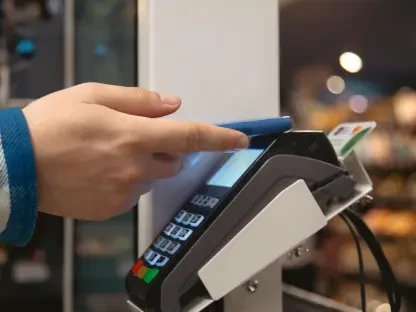The global e-commerce industry stands at a monumental crossroads as it surges past the staggering milestone of $5 trillion in revenue by 2026, highlighting not only the sector’s explosive growth but also signaling a profound transformation in how consumers shop, businesses operate, and markets evolve. With digital platforms reshaping retail landscapes worldwide, what forces are driving this historic shift, and how will uneven growth patterns and emerging disruptors redefine the future of online commerce? This report delves into the dynamics propelling e-commerce to new heights, uncovering the trends, challenges, and opportunities that lie ahead.
The E-Commerce Landscape in 2026: A Historic Milestone
Reaching $5 trillion in global revenue by 2026 marks a defining moment for the e-commerce sector, reflecting its evolution from a niche channel to a dominant force in retail. This milestone underscores a seismic shift as online platforms continue to displace traditional brick-and-mortar stores, driven by widespread consumer trust in digital transactions. The scale of this achievement is a testament to the industry’s ability to adapt and thrive amid changing economic and technological tides.
Several key factors have fueled this remarkable growth, including heightened consumer adoption across demographics, advancements in logistics for faster and more reliable deliveries, and significant expansion into emerging markets with rising internet access. Technologies such as mobile commerce and social commerce have further accelerated this trend, reshaping how purchases are made. Major players like Amazon maintain a stronghold, while newer entrants like TikTok Shop capitalize on innovative engagement models to capture market share.
Additionally, the diversity of e-commerce segments, from grocery to expansive online marketplaces, illustrates the sector’s broadening scope. Regional economic conditions also play a critical role, with varying levels of digital maturity influencing growth trajectories. This complex interplay of factors sets the stage for a deeper exploration of trends and challenges shaping the industry’s path forward.
Growth Trends and Market Dynamics
Emerging Trends Shaping E-Commerce
One of the most striking developments in the e-commerce sphere is the rapid rise of grocery sales as a powerhouse category, projected to grow at 14.4% and contribute over 10% of total revenue by 2026. This surge reflects a fundamental shift in consumer behavior, as online grocery shopping becomes normalized, supported by improved delivery networks. The demand for quick-commerce models, which prioritize speed and convenience, further amplifies this trend, integrating digital solutions into daily life.
Another transformative force is the explosive growth of platforms like TikTok Shop, which is expected to achieve nearly 60% growth in gross merchandise value by 2026 through innovative strategies like livestream selling and algorithmic product discovery. These approaches have redefined consumer engagement, blending entertainment with shopping. Such platforms highlight the growing influence of social commerce, where social media ecosystems drive purchasing decisions.
Marketplaces continue to dominate the e-commerce landscape, accounting for an estimated 87% of business-to-consumer physical goods spending by 2026. Their success stems from expansive seller networks and seamless integration of social commerce features, which enhance visibility and accessibility. This structural shift toward marketplace-centric models emphasizes the need for retailers to align with these platforms to remain competitive in a crowded digital space.
Market Performance and Projections
Despite reaching the $5 trillion mark by 2026, global e-commerce growth shows signs of moderation following the pandemic-driven boom. This slowdown indicates a maturing market where expansion is no longer uniform but concentrated in specific regions and categories. Understanding these nuances is crucial for stakeholders aiming to capitalize on remaining growth opportunities.
Regional disparities are particularly pronounced, with Latin America emerging as the fastest-growing e-commerce hub, propelled by increasing internet penetration and mobile adoption. Conversely, the GSA region, encompassing Germany, Switzerland, and Austria, trails behind with sluggish growth, hampered by saturated markets and slower digital transformation. These contrasts reveal how economic and infrastructural differences shape market outcomes.
Looking at the competitive landscape, traditional giants like JD.com, Tmall, and Taobao face stagnation, while TikTok Shop’s dynamic rise signals a shift in market power. Projections for 2027 and beyond suggest that growth will remain uneven, with categories like grocery and regions like Latin America continuing to lead. This evolving picture underscores the importance of strategic focus on high-potential areas to sustain momentum.
Challenges in the E-Commerce Sector
The e-commerce industry, while thriving, grapples with significant hurdles that threaten to impede its progress. Uneven regional growth remains a critical issue, as disparities in digital maturity and economic conditions create inconsistent market environments. Addressing these imbalances requires tailored approaches that account for local consumer needs and infrastructural capabilities.
Traditional retail giants also face mounting competitive pressures in a cooling market, struggling to innovate amid stagnation. Many established players find it challenging to match the agility of newer entrants, risking loss of relevance. This dynamic highlights the necessity for legacy companies to rethink business models and prioritize adaptability to retain market share.
Technological and logistical obstacles further complicate the landscape, particularly in scaling quick-commerce models and ensuring delivery reliability. Meeting consumer expectations for speed while maintaining cost efficiency demands substantial investment in infrastructure and innovation. Potential solutions include enhancing cross-border capabilities, leveraging data-driven logistics, and creating unique consumer experiences to build loyalty in a crowded field.
Regulatory and Compliance Landscape
Navigating the regulatory environment is a pivotal aspect of global e-commerce operations, with data privacy and consumer protection laws varying widely across regions. These regulations significantly influence how platforms access markets and design operational strategies, often requiring localized compliance efforts. Staying abreast of these rules is essential for maintaining a seamless international presence.
The impact of regional regulatory frameworks can either facilitate or hinder market entry, shaping competitive dynamics for e-commerce entities. For instance, stringent data security mandates in some areas may impose additional costs but also reinforce consumer trust. Platforms must balance compliance with operational efficiency to avoid penalties and maintain credibility.
Moreover, adherence to security standards is paramount for safeguarding consumer confidence and ensuring platform reliability. Regulatory changes also affect marketplace dominance and cross-border practices, as policies on taxation and trade can alter cost structures. A proactive stance on compliance will be crucial for e-commerce players to navigate this complex and evolving landscape.
Future Outlook for Global E-Commerce
As the e-commerce sector moves beyond 2026, emerging technologies and innovative commerce models are poised to redefine the industry’s trajectory. Advances in artificial intelligence and augmented reality could further personalize shopping experiences, while new social commerce platforms may challenge existing leaders. Keeping pace with these developments will be vital for sustained growth.
Consumer preferences are also expected to evolve, with an increasing emphasis on speed, convenience, and seamless integration across channels. Potential disruptors, including niche platforms catering to specific demographics, could fragment the market further. Retailers must anticipate these shifts to stay relevant in an ever-changing digital ecosystem.
Global economic conditions and regional growth patterns will continue to influence market dynamics, alongside the concentration of power among dominant platforms. Investments in marketplace optimization and digitally mature consumer experiences will likely determine which players lead the next wave of growth. Adaptability to these multifaceted trends will shape the future of digital retail over the coming years.
Conclusion: Navigating the Future of Digital Retail
Reflecting on the journey to $5 trillion in 2026, the e-commerce sector demonstrated remarkable resilience and innovation, even as it encountered uneven growth across regions and categories. The ascent of disruptors like TikTok Shop and the structural dominance of marketplaces underscored a pivotal shift in competitive hierarchies. Meanwhile, the breakthrough of grocery e-commerce as a key revenue driver pointed to changing consumer habits that redefined retail norms.
Looking back, the challenges of regional disparities and logistical constraints tested the industry’s ability to scale sustainably. Yet, these obstacles also spurred a focus on strategic solutions that could carry forward. For stakeholders, the next steps involve prioritizing investments in high-growth areas like emerging markets and quick-commerce capabilities to capture untapped potential.
Ultimately, the path ahead demands a commitment to agility and foresight, with an emphasis on leveraging data analytics to predict consumer trends and refine cross-border operations. By fostering partnerships with marketplaces and embracing technological advancements, businesses can position themselves to thrive amid future uncertainties. The e-commerce landscape, though complex, offers boundless opportunities for those ready to innovate and lead.









